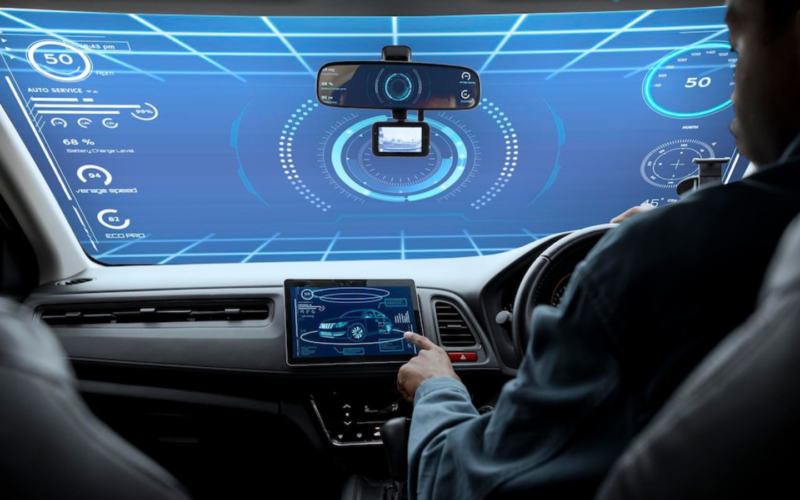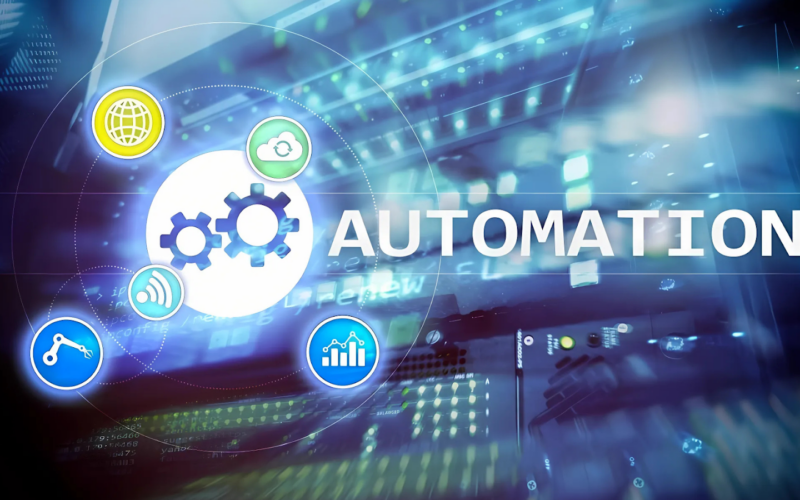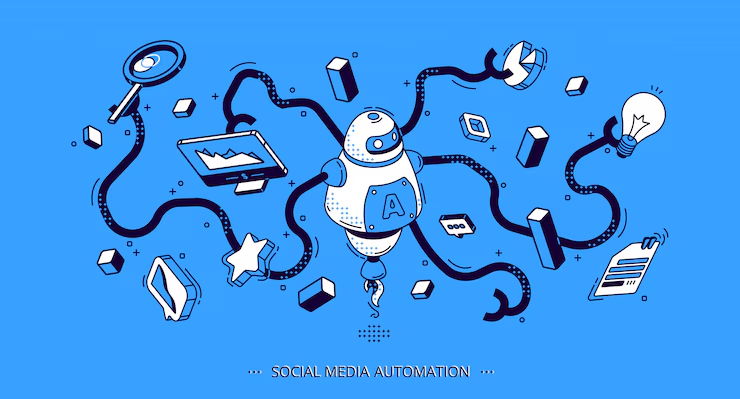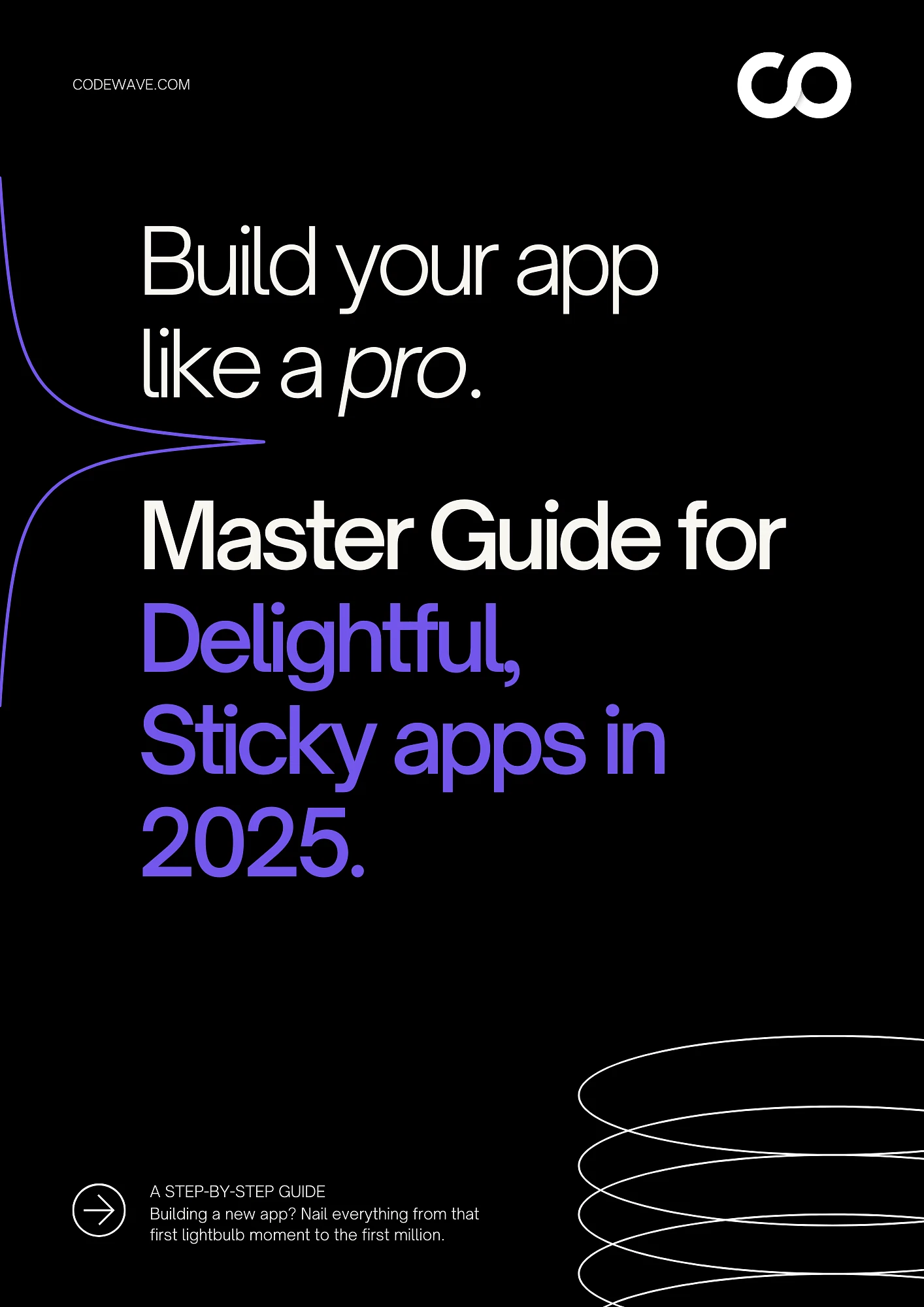Generative AI creates new patterns, content, or predictions based on existing data, think of it as AI that doesn’t just analyze but imagines. In transportation, this means generating alternate delivery routes, forecasting traffic surges, or simulating rare driving scenarios in seconds. The global generative AI in transportation market is expected to hit $1.21 billion in 2025, up from $1.01 billion in 2024, growing at nearly 20% year over year.
If you’re running logistics, managing fleets, or building mobility solutions, chances are you’re battling delays, rising operational costs, and unpredictable disruptions.
That’s where generative AI steps in. This article breaks down how you can use it without overhauling your tech stack.
Key Takeaways
- Generative AI in transportation helps improve route planning and predict maintenance, making fleet management more efficient.
- The architecture behind it involves integrating real-time data, choosing the right AI models, and ensuring smooth system integration.
- Implementing AI requires clear goals, pilot programs, and continuous feedback loops to refine and optimize performance.
- Codewave offers seamless generative AI integration for transportation, providing tailored solutions to enhance operational efficiency and reduce costs.
Why Does Transportation Need Generative AI?
You’re running a logistics team, and a truck breaks down outside Pune. Another is delayed because of sudden rain near Hyderabad. Meanwhile, traffic near the Chennai port is crawling at 5 km/h. You’re stuck juggling calls, rerouting shipments manually, and updating frustrated clients. Sounds familiar?
That’s where generative AI in transportation starts to matter.
Let’s break down where generative AI is already making a difference in transport:
- Dynamic Route Planning: Instead of reacting to traffic updates after the delay happens, generative AI can predict and create alternate routes in real time.
- Demand Forecasting + Simulation: When past data isn’t enough, generative AI fills in the gaps. The AI can generate synthetic demand patterns based on similar geographies.
- Autonomous Vehicle Decision-Making: Self-driving vehicles need to learn from rare, high-risk situations. Generative AI helps simulate these scenarios, so your AV systems don’t freeze when they face them.
- Driver Assistance & Training Modules: Most drivers won’t face black ice or heavy fog during training, but generative AI can simulate these conditions, so they’re ready when it counts.
- Maintenance Schedules: Instead of sticking to fixed service timelines, AI can generate predictive maintenance logs based on how each vehicle behaves.
Struggling to optimize your transportation operations and reduce delays? Explore Codewave’s generative AI solutions for transportation to enhance route planning, predictive maintenance, and real-time decision-making. Start improving your fleet’s efficiency today!
To understand how these use cases come to life, it helps to look at the setup behind generative AI in transportation.
Generative AI Architecture in Transport
You’re tracking delays, fuel use, and driver routes, but the insights come late. By the time a truck misses its ETA, there’s not much you can do.
That’s the gap generative AI in transportation can fill, if your architecture’s built for it. Businesses often struggle here. Too many disconnected systems. Too much data sitting unused.
Below is a breakdown of what you actually need:
1. Input Sources
Generative AI is only as sharp as the data you give it. For transportation, that means pulling from a mix of live and historical sources that reflect what’s happening on the ground, and what’s happened before.
You’ll need:
- Fleet telematics: GPS location, engine status, fuel consumption
- Traffic and weather feeds: Real-time maps, congestion updates, rainfall alerts
- Delivery schedules and logistics CRMs: Planned routes, time windows, order details
- On-vehicle sensors: Camera feeds, LiDAR scans, temperature sensors
- Historical logs: Route history, delay patterns, driver behavior data
These inputs help generative AI spot patterns, predict disruptions, and generate better decisions.
2. Model Types & Roles
Once the data’s in, different models take on different jobs. Each plays a role in helping your systems respond faster and think smarter.
Used to generate driver alerts, maintenance summaries, or even chat-based interfaces for fleet managers. Think of them as AI that communicates and organizes insights in plain language.
- GANs and Diffusion Models
These are best for creating training simulations. They help autonomous systems practice rare events, like a tire blowout on a wet road, without needing to see it happen in real life.
- Time-Series Models
Trained on patterns over time, these models forecast demand, traffic, or fuel usage. Useful for planning shifts, adjusting delivery routes, or prepping for seasonal spikes.
Facing challenges with AI/ML integration in your systems? Explore Codewave’s AI/ML development services to build intelligent solutions that drive smarter decisions and enhance business performance. Transform your business with AI today!
3. Processing & Infrastructure
This is where most teams pause. You’ve got the data and the models, but how do you actually run them without rebuilding your entire tech stack?
Here’s what matters:
- Cloud or Edge Deployment
Train models in the cloud, then run them at the edge, right inside your vehicles, for real-time responses. Useful when delays of even a few seconds can cost money or risk safety.
- System Integration
Connect AI outputs with your ERP, CRM, or logistics tools. That way, route changes, alerts, and maintenance flags show up where your teams already work.
- APIs for Live Inference
Use APIs to plug AI models into your existing dashboards and apps. No need for custom-built platforms unless you want full control.
- Scalability and Cost Control
Start with small pilots. Expand only when there’s proven value. You don’t need to commit to massive infrastructure upgrades on day one.
4. Outputs
Once the data flows in and the models run, generative AI starts delivering outputs that directly impact your daily operations:
- Alternate Routes in Real Time
No more waiting for dispatch to reroute manually. Drivers get AI-generated route suggestions the moment conditions shift.
- Synthetic Training Data
Want to prepare drivers or AV systems for high-risk events that rarely happen? The AI can create those scenarios for safer, smarter training.
- Maintenance Logs and Forecasts
Instead of reactive servicing, you get AI-generated logs predicting which vehicles need attention, based on actual usage, not fixed intervals.
- Safety Warnings and Delivery Forecasts
Early flags on risky driving behavior, weather disruptions, or delayed ETAs help your team stay one step ahead.
- AI-Generated Dashboards
Insights delivered clearly, what’s working, what’s not, and what to fix, without your analysts digging through spreadsheets.
5. Feedback Loops
Generative AI isn’t a set-it-and-forget-it tool. It learns and improves if the feedback loop is built right.
- Human-in-the-Loop Validation
Let your fleet managers review AI-suggested reroutes or maintenance alerts before action is taken. This keeps control in your hands and builds trust in the system.
- Continuous Learning from Live Data
As more trips happen and more decisions are made, the model learns. It starts spotting patterns faster, predicting disruptions earlier, and generating better results with less guesswork.
- Adaptability Built In
Whether it’s a seasonal delivery spike or a route that suddenly becomes unreliable, the system adjusts, not months later, but in near real time.
The more your teams use it, the smarter it gets.
Build vs Integrate: What’s Right for Your Business?
| Factor | Build In-House | Integrate with External Tools |
| Control | Full control over data, models, and outputs | Limited to what the vendor allows |
| Speed to Deploy | Slower—requires setup, hiring, and testing | Faster—can get started within days or weeks |
| Upfront Cost | Higher (infrastructure, talent, dev time) | Lower (subscription or usage-based pricing) |
| Long-term Cost | Lower if scaled well | Can grow with usage—watch for hidden fees |
| Customization | High—tailored to specific operations or compliance needs | Limited—works best for common use cases |
| Talent Requirement | Needs in-house AI, data, and dev teams | Minimal—basic IT support is often enough |
| Maintenance | Your team handles updates, tuning, and scaling | Vendor-managed (updates, scaling, security) |
| Best For | Large fleets, deep tech teams, long-term AI investment | Mid-sized teams, fast pilots, non-core use cases |
Now that you’ve seen how generative AI in transportation is built and functions, it’s time to focus on applying it.
Implementation Tips for CTOs & Product Leaders
You’ve built a solid fleet management system. But now, your team struggles to keep up with delays, changing conditions, and unpredictable disruptions. The tech works, but the challenge is applying it effectively. You need a smart rollout, clear goals, and a plan for scaling without chaos.
Let’s focus on the steps that matter most.
1. Define Clear Goals
Defining the right goals is crucial for successful AI implementation. Start by asking: What problems are we solving, and what does success look like?
Here’s a simple breakdown for defining your goals:
- Identify the problem: What specific issues are you trying to address? (e.g., traffic delays, fuel inefficiency, unexpected downtime)
- Set measurable outcomes: Choose KPIs like reduced delivery time, improved fleet uptime, or decreased fuel costs.
- Clarify ROI: How will you measure return on investment? Think about direct cost savings or improvements in customer satisfaction.
- Timeline: When do you want to see results? Define short-term and long-term milestones.
2. Start with a Pilot Program
A pilot program is an essential step before scaling AI across your fleet. It allows you to test the waters, refine models, and identify potential roadblocks.
Here’s what your pilot should include:
- Choose a high-impact use case: Pick one pain point that will deliver measurable benefits, like route optimization or predictive maintenance.
- Set up clear objectives: What exactly do you expect to achieve in the pilot? (e.g., reduce delivery delays by 10%)
- Define a limited scope: Keep the pilot small, maybe focusing on one city or one segment of your fleet.
- Gather feedback: Get input from fleet managers, drivers, and IT teams to ensure the system is functioning as expected.
- Measure results: Track how the pilot performs against the KPIs you set in step 1.
3. Assess Data Readiness
AI needs quality data to work. Before diving into implementation, assess your data readiness with this checklist:
- Do you have real-time fleet telematics (GPS, fuel consumption, engine data)?
- Are you collecting traffic and weather data consistently?
- Do you have access to historical data (route performance, past delays)?
- Are your data sources integrated and accessible for AI models?
- Is the data clean, accurate, and free from gaps?
4. Build the Right Infrastructure
Setting up the right infrastructure is critical for real-time AI applications. Here’s what to watch out for:
- Data Integration: Ensure that AI outputs (like route recommendations or maintenance alerts) integrate smoothly into your existing ERP, CRM, and fleet management tools.
- Edge vs. Cloud: Decide if your AI models will run in the cloud (for processing large datasets) or on the edge (for real-time decisions in the vehicle). Both have trade-offs related to cost and speed.
- Scalability: Your system should be able to grow as your business scales. Start with a pilot but choose a setup that can handle increasing data volumes and processing demands.
- Security: As with any technology, prioritize data security. Make sure the infrastructure complies with local regulations (GDPR, etc.) and keeps sensitive fleet data protected.
- Latency and Speed: Since AI in transportation often involves real-time decision-making (e.g., rerouting trucks), ensure low-latency systems to minimize delays.
5. Iterate and Optimize
AI systems are not static; they improve with time and use. To get the most from your generative AI solution, keep iterating and optimizing:
- Feed your system new data from every trip, delivery, and maintenance log.
- Set up dashboards that provide real-time performance data.
- Regularly review and update your AI models based on fresh data and changing business needs.
6. Monitor and Measure Impact
To understand whether generative AI is truly enhancing your transportation operations, you need to measure its impact consistently. Here’s how:
- Key Performance Indicators (KPIs): Set and track KPIs like:
- Reduced delivery time
- Decreased fuel consumption
- Fewer breakdowns or delays
- Improved driver safety
- Cost Savings: Measure direct savings from AI-driven route optimization, predictive maintenance, and more efficient planning.
- Customer Satisfaction: Monitor customer feedback and delivery satisfaction rates as an indirect measure of operational efficiency.
As you implement generative AI today, it’s also crucial to keep an eye on what’s coming next.
Struggling with scaling your infrastructure efficiently? Explore Codewave’s Cloud/Edge Infrastructure development services to build scalable, high-performance systems that support real-time operations and seamless data processing. Optimize your infrastructure today!
Incorporating generative AI into your transportation operations can lead to smarter decisions and more efficient processes. Looking ahead, explore advanced areas like autonomous fleet management, AI-driven city infrastructure, and blockchain integration to stay ahead of the curve.
Why Choose Codewave for Generative AI in Transportation?
Curious how Codewave can help integrate generative AI into your transportation operations? Explore our portfolio to see how we’ve helped integrate powerful generative AI features seamlessly.
At Codewave, we go beyond the fundamentals, crafting AI-powered systems that are seamlessly integrated into your operations.
What You Get with Codewave’s Generative AI Integration for Transportation:
- 60% improvement in operational efficiency by automating route planning, predictive maintenance, and real-time fleet management.
- 3x faster deployment, getting your AI-powered transportation solutions live quicker and reducing downtime.
- Save up to 3 weeks every month by automating manual tasks like rerouting, maintenance scheduling, and data processing.
- 25% reduction in operational costs through AI-driven optimizations, smarter fleet management, and predictive insights.
Our Services Include:
- Generative AI Integration for Transportation: Tailored AI solutions like route optimization and predictive maintenance to align with your goals and scale your operations.
- AI-Powered Fleet Management Development: Build AI features for dynamic route planning, autonomous vehicle decision-making, and synthetic data generation to improve efficiency.
- Advanced AI Features Integration: Integrate cutting-edge AI technologies for smarter decisions, real-time analysis, and seamless fleet operations.
- Data Analytics & Optimization: Use dashboards and analytics tools to monitor performance, track key metrics, and optimize your transportation operations.
Curious to see what your data is really capable of? Book a free demo with Codewave’s experts and discover how we can turn your data into real results.
FAQs
Q. How do I ensure that generative AI is a good fit for my transportation operations?
A. To determine if generative AI in transportation is a good fit, start by identifying specific pain points in your operations, like delays, route inefficiencies, or high maintenance costs. Evaluate if these areas can benefit from automation or predictive analytics. If they can, then implementing AI can significantly reduce costs and improve efficiency.
Q. What are the initial costs of integrating generative AI in transportation systems?
A. The initial costs of implementing generative AI in transportation depend on your infrastructure and scale. You’ll need to account for AI model development, data integration, and potential upgrades to existing systems. While upfront costs may be high, long-term savings in efficiency, maintenance, and fuel consumption will outweigh the investment.
Q. How does generative AI handle unexpected disruptions like traffic or vehicle breakdowns?
A. Generative AI can predict and adapt to disruptions by analyzing live data, such as traffic patterns and weather reports. When a disruption is detected, the system can generate alternate routes, predict delays, and adjust schedules to minimize the impact on operations, allowing businesses to handle unexpected events smoothly.
Q. Will generative AI require constant manual oversight, or is it fully autonomous once set up?
A. While generative AI in transportation is designed to operate autonomously in many cases, it still benefits from human-in-the-loop validation. This means fleet managers or drivers may need to verify or adjust AI-generated recommendations in certain situations, ensuring accuracy and mitigating risks in high-stakes scenarios.
Q. Can generative AI be scaled to work across multiple cities or regions?
A. Yes, generative AI can be scaled to handle operations across multiple cities or regions. By utilizing cloud-based or edge computing solutions, AI models can be deployed across large geographic areas, adjusting to local traffic patterns, weather conditions, and route demands, while still providing real-time, localized decision-making.
Q. Will implementing generative AI disrupt my current workforce or cause layoffs?
A. While generative AI will automate certain tasks, it’s designed to enhance human roles, not replace them. It can help workers by providing insights, improving safety, and reducing manual tasks like scheduling or data analysis. With proper training, employees can shift to more strategic tasks, adding greater value to the business.
Codewave is a UX first design thinking & digital transformation services company, designing & engineering innovative mobile apps, cloud, & edge solutions.







